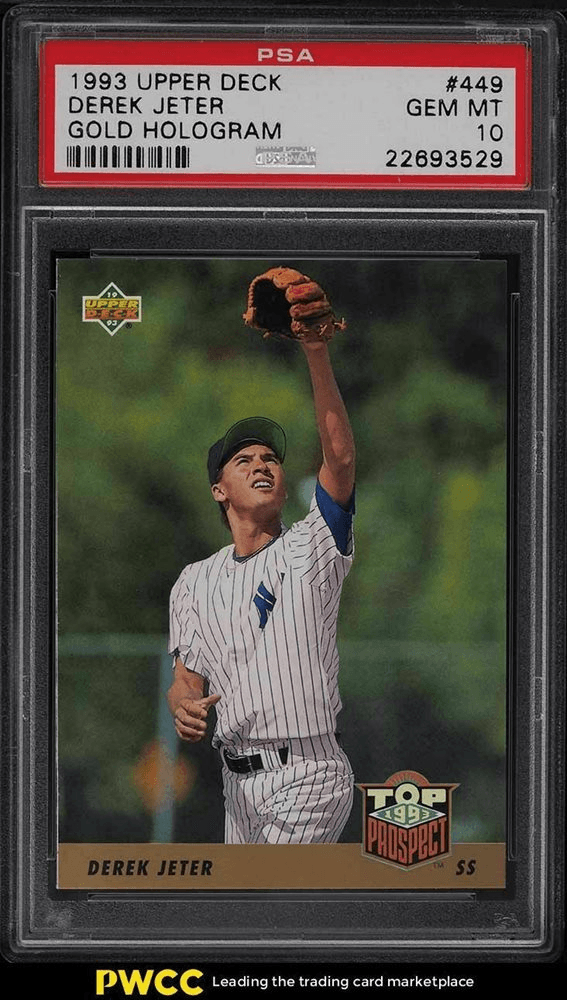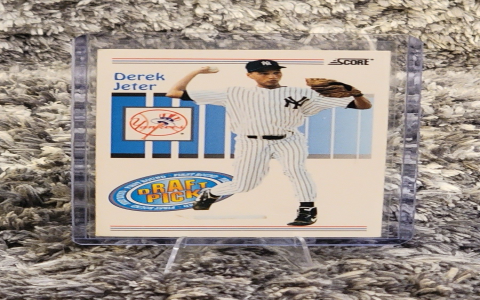Okay, so I was digging through some old boxes the other day, you know, the kind you stuff in the attic and forget about. And boom, I found this Derek Jeter baseball card. Haven’t seen it in years. My first thought was, “Hey, Jeter! Wonder if this thing is worth anything now?”

My First Steps
So, what do you do? You grab your phone, right? I just typed in something super basic like “how much is a derek jeter card worth”. Man, that was kinda useless. The results were all over the place because, duh, there are like a million different Jeter cards.
I realized pretty quick I needed to figure out which specific card I actually had. So, I pulled the card out and looked closer. Had to find the year, the brand, and usually there’s a card number on the back.
Getting Specific
Mine turned out to be a specific year and brand – let’s just say for example it was a 1993 Upper Deck SP. Okay, much better. Now I could search for something like “1993 Upper Deck SP Derek Jeter rookie card value”. That narrowed it down a lot.
This led me to a few websites that specialize in sports cards. Saw names like PSA, Beckett, places like that. They list prices, which was helpful. But then I hit another snag.
Condition is Everything
All these sites kept talking about condition. Mint, Near Mint, Excellent, Good, Poor… My card? Well, it wasn’t perfect. It wasn’t horrible either, but definitely not straight-from-the-pack fresh. The corners weren’t super sharp, maybe a tiny bit of wear on the edge. This makes a HUGE difference in price.
I saw stuff about getting cards “graded” by companies like PSA. They put it in a plastic case with a grade, like a 9 or 10. Those graded ones, especially the high grades, sell for way more. But getting it graded costs money and takes time, so I wasn’t sure I wanted to go through all that just yet.
Checking Real Sales
So, here’s what I found most useful: I went over to eBay. But I didn’t just look at what people were asking for the card. That doesn’t mean much. I searched for my specific card again (the 1993 Upper Deck SP Jeter) and then used the filter to look at sold listings. This shows you what people actually paid for it recently.
- I looked for cards that looked like mine in condition.
- Compared prices for ungraded ones like mine.
- Also checked prices for graded ones just to see the difference.
Figuring Out a Ballpark Value
After looking at a bunch of recent sales for the same card in roughly the same condition as mine (ungraded, looking decent but not perfect), I started to get a feel for a realistic price range. It wasn’t gonna make me rich, not this specific card anyway, but it was definitely worth more than I initially thought.

So yeah, that was my process. Started broad, had to get specific with the card details, understood condition was super important, and finally checked actual sold prices to get a real-world idea. It took a bit more effort than a simple Google search, but now I actually have a decent clue what my Jeter card might be worth.














